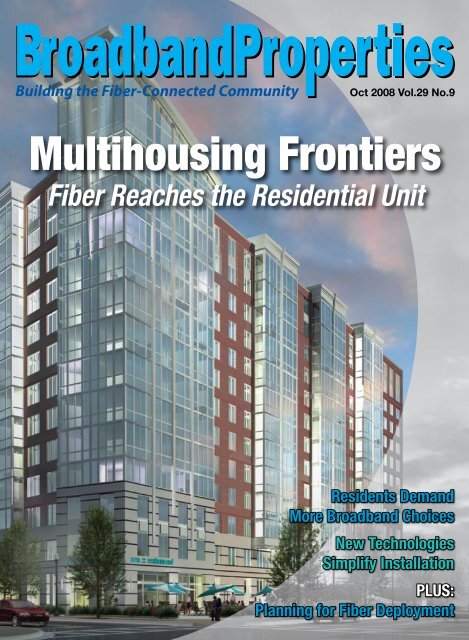Exploring the Effect of Network Standards on Enhancing Internet Connectivity in Multi-Dwelling Units
Exploring the Effect of Network Standards on Enhancing Internet Connectivity in Multi-Dwelling Units
Blog Article
Ethernet protocols serve a crucial function in improving internet access, particularly in multi-unit units (MDUs) such as apartment complexes and condominiums. These standards outline how information is communicated over networks, ensuring that equipment can communicate effectively. As an increasing number of people depend on the web for work, learning, and entertainment, having a reliable and high-speed connection in MDUs has grown increasingly important. By comprehending networking standards, building managers and tenants can make knowledgeable decisions about their internet services, resulting to better connectivity for all.
One of the primary Ethernet standards is IEEE 802.3, which details the specifications for cabled Ethernet connections. This specification has developed over the years, introducing quicker speeds and improved efficiency. For example, the initial Ethernet standard offered rates of 10 megabits per sec, while newer versions, such as Gigabit Ethernet, can provide rates of up to 1,000 Mbps. In MDUs, where numerous tenants share the common web connection, having a rapid Ethernet system can significantly improve the overall user interaction. Faster speeds mean faster file transfers, smoother broadcasting, and greater video calls, which are essential for off-site employment and online cost effective mdu internet education.
Another significant aspect of Ethernet standards is the implementation of structured cabling infrastructures. These systems organize and coordinate the network cables that link equipment within a building. By following the guidelines set by Ethernet protocols, MDUs can guarantee that their cabling is effective and efficient. This organization helps minimize signal interference and improves data transfer quality. Additionally, structured wiring enables for easier upgrades and servicing, allowing it easier for property managers to adjust to evolving technology requirements. As web utilization continues to increase, having a properly organized cabling system is vital for ensuring top-notch connectivity.
Electricity over Ethernet (PoE) is another important development in Ethernet technology that benefits MDUs. PoE enables network cables to transmit electrical power along with information, removing the need for separate electric supplies for devices like security monitors, Wi-Fi connectivity points, and VoIP phones. This capability streamlines setup and reduces clutter, making it simpler to establish a comprehensive network in multi-unit buildings. By utilizing PoE, property managers can improve safety and boost internet access throughout the building without the extra cost of additional electrical installation.
In conclusion, Ethernet protocols have a profound effect on internet connectivity in multi-unit units. By providing quicker rates, structured wiring, and innovative features like Electricity over Ethernet, these standards help establish a reliable and efficient system for residents. As technology persists to advance, staying aware about Ethernet standards will be crucial for building managers and tenants alike. By putting resources in the right infrastructure, MDUs can guarantee that all residents enjoy a smooth web experience, making their residences more connected and convenient.